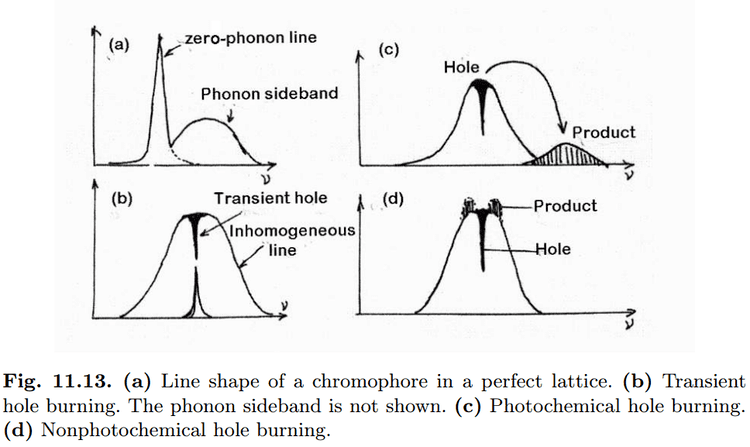 | ||
Spectral hole burning is the frequency selective bleaching of the absorption spectrum of a material, which leads to an increased transmission (a "spectral hole") at the selected frequency.
Two basic requirements must be met for the observation of this phenomenon:
- The spectrum is inhomogeneously broadened
- The material undergoes, subsequent to light absorption, a modification which changes its absorption spectrum. Typical materials include dye molecules dissolved in suitable host matrices and the frequency selective irradiation is usually realized by a narrow band laser.
Particular Case
Most molecules and atoms always return from the excited state to the initial ground state. In some situations, however, this may not be the case. For example, some organic dye molecules can undergo a photochemical reaction, which alters the whole chemical structure of the molecule. If such a photochemically active molecule absorbs light, then with a probability of a few percent it will not return to the initial, educt state, but will rather switch over to a new, product ground state. Often the homogeneous absorption spectrum of the product is much different from that of the educt, so that the corresponding inhomogeneous bands do not overlap.
Spectral hole width can be expressed as following:
VH=Vh[1+Iv/Is(v0)]0.5
where VH is spectral hole width, Vh is homogeneous linewidth, v0 is the centre frequency and Is is the saturation intensity.
